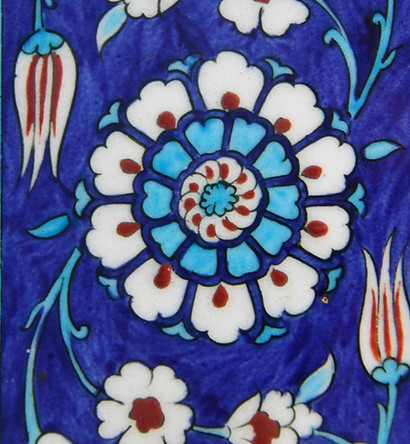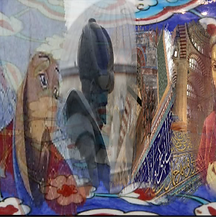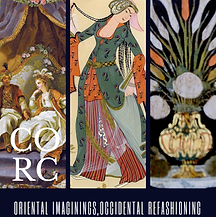





Welcome to the Centre for Ottoman Renaissance and Civilisation (CORC). Our aim is to provide research to promote the global nature of the Renaissance. CORC aims to provide a forum for the study of the Renaissance in a global context with added focus on the distinctive features of the Ottoman Renaissance and its affiliations with the Greco-Roman tradition and the Islamic East. It encourages interdisciplinary studies of the early modern Mediterranean world that are cross-national and comparative to encourage interaction among academics from relevant and various traditions of learning.





Rethinking the Renaissance
We have been enthusiastic in our praise of Italy, a country that at the end of the fifteenth century resurrected the art of ancient Rome after this achievement had lain dormant for over a thousand years. During the same period, however, buildings were erected on the Bosphorus that have been belittled for the simple reason that they were replicas of Hagia Sophia. Yet it is no less a renaissance of astounding individuality that sprang up from the soil made fertile by the spirit of ancient Greece. The revival of ancient perceptions of shape and form occurred here with the same freedom, independence, and boldness, with the same artistic and creative force, that was shaping the culture on the opposite shores of the Adriatic Sea.
Cornelius Gurlitt (1850-1938)

Rethinking the Renaissance
The Renaissance is usually associated with the Italian city states like Florence, but Italy’s undoubted importance has too often overshadowed the development of new ideas in northern Europe, the Iberian peninsula, the Islamic world, south-east Asia, and Africa. In offering a more global perspective on the nature of the Renaissance, it would be more accurate to refer to a series of ‘Renaissances’ throughout these regions, each with their own highly specific and separate characteristics. These other Renaissances often overlapped and exchanged influences with the more classical and traditionally understood Renaissance centred on Italy. The Renaissance was a remarkably international, fluid, and mobile phenomenon.
Jerry Brotton, The Renaissance: A Very Short Introduction






Publications
The book re-evaluates Ottoman art of the early modern period within the Renaissance paradigm. It argues that the Ottomans indeed had a Renaissance at the same time as the Europeans of the West and that, whilst sharing certain characteristics, the Ottomans experience a Renaissance distinct to their European counterparts. In addition to the influences of classical Greece and Rome, Metin Mustafa argues that the Ottomans drew on their Eastern past – their Steppe heritage, Islamic, Timurid and Persian influences, marking a significant divergence with the West. By casting the net wide and clearly demonstrating the vast range of traditions, which inspired the grand cultural phenomenon of the early modern Ottoman period, he uniquely situates the Ottoman Renaissance in a more meaningful historical context. East and West were fundamental to the Ottoman mindset and this is what is emphasized in the book.
“This book is distinctive for the directness with which it addresses its subject. While earlier of Ottoman art and architecture have gestured toward connections with the Renaissance, these connections are presented here in a lucid and systematic way that will engender considerable discussion, inviting a general re-evaluation of what we mean by ‘The Renaissance’.”
Giancarlo Casale, Professor of Early Modern History of the Mediterranean, University of Minnesota and author of The Ottoman Age of Exploration.
This book commemorates the 100th anniversary of the proclamation of the Republic of Turkey by Mustafa Kemal Atatürk on 29 October 1923, following the proclamation of the dissolution of the Ottoman Empire by Turkey’s Grand National Assembly on I November 1922. The study focusses on the art historical developments of Ottoman civilisation in the period from 1683 to 1867, as well as the appeal of the Ottoman Orient to the European taste for ‘everything Turkish’ and the exotic.
The whimsical fantasy world of turquerie emerged in European courts during the 18th century. The art trend inspired by ‘all things Turkish’ influenced European aristocracy and elite in Paris, London, Saxony, Poland, Sweden and other capitals. Turquerie affected most aspects of European cultural creativity including costumes, paintings, architecture, music, theatre, plays, ballets and operas. Ottoman motifs, dress, music, ceremonial practices, the lives of the women of the harem, pashas, and sultans, inspired European artists, writers, musicians, princes, kings and queens including Louis XVI, Madame de Pompadour and Marie Antoinette to emulate Ottoman life.
Concurrently, at the Ottoman court in Istanbul, the love of flowers by the sultans ushered in the Tulip Age (1718-30) echoed by the court poet Nedim. The Tulip Age epitomised the ‘opening to the West’. At the Ottoman court ‘all things European’ influenced art and architecture with the introduction of Ottoman rococo and baroque that blossomed throughout the 18th century with distinctively Ottoman flair even reaching the far distant provinces of the empire by the middle of the 19th century signalling the age of Ottoman modernity. The new art form coincided with the arrival of the Tanzimat reforms in the 1830s, and exported to the provinces of the empire, providing a direct link with the centre of power in imperial Istanbul. The modernisation and restructuring of the empire, the Ottoman government had hoped to thwart any ethnic uprisings and rebellions to prevent the empire from fragmenting.
Upon the publication of the first edition of this book in 1999, I believed I would not return to it once its completion. However, with the benefit of hindsight, history continually offers us new events and evidence to analyse, enhancing our comprehension of the world we inhabit. Given the significant developments that have occurred since the initial release of this book, I, as a historian, deemed it essential to contribute further to the ongoing discourse surrounding the themes of 'them versus us’ and the ‘clash of civilisations’. Consequently, the addendum for the second edition began to evolve into a distinct entity, guiding me toward topics I had not originally intended to explore.
To comprehend the concept of Muslim "backwardness," it is essential to delve into the fundamental aspects of the topic from a modern perspective. This entails investigating the role of higher education in Muslim nations, the allocation of governmental resources for research and innovation, the pursuit of academic validation within Western paradigms, and the representation of Muslims by Muslims through the use of soft power techniques. Furthermore, the evolving negative perceptions of Islam in Europe, which have transformed into what is now termed Islamophobia, require examination within the framework of the 21st century. The events of September 11, 2001, reignited the enduring discourse between Islam and the West, echoing the Christian Crusades of the eleventh century. This revival highlights the clash of civilisations thesis articulated by Samuel P. Huntington in 1993, necessitating a reassessment of the original edition of my book through a contemporary lens. However, this analysis would be incomplete for today's audience without a comprehensive investigation of the book's initial focus—Muslim contributions to the advancement of Western civilisation and the evolving perceptions of Islam that have emerged in Europe since the Middle Ages, which continue to have relevance in the present day.




Documentaries
The Age of Sultan Süleyman the Magnificent
Produced by Centre for Ottoman Renaissance and Civilisation
Narrated by Dr Metin Mustafa



Ottoman Renaissance Civilisation



Continuing Education Courses
in Islamic & Ottoman History
Centre for Ottoman Renaissance and Civilisation courses developed and presented by Dr Metin Mustafa














